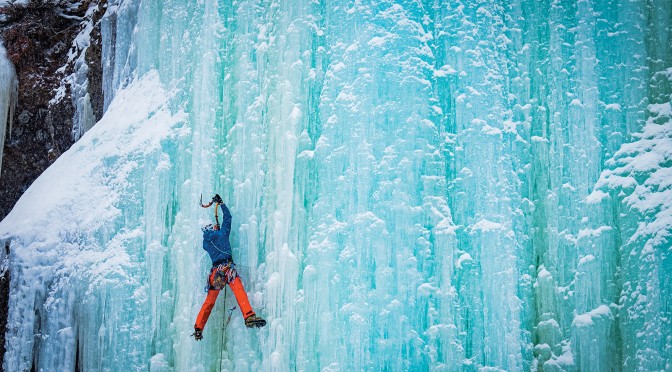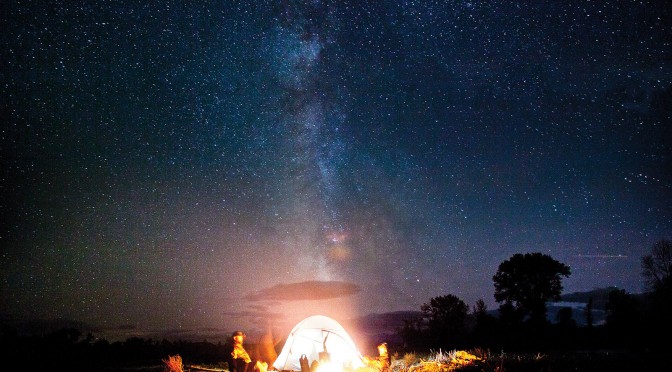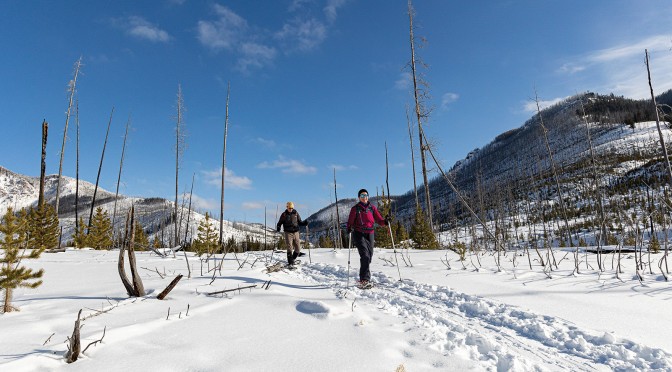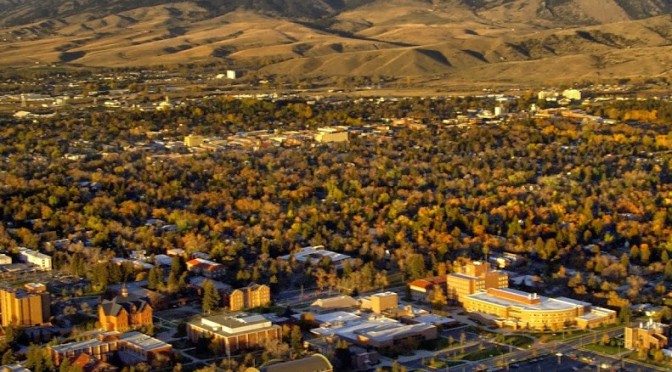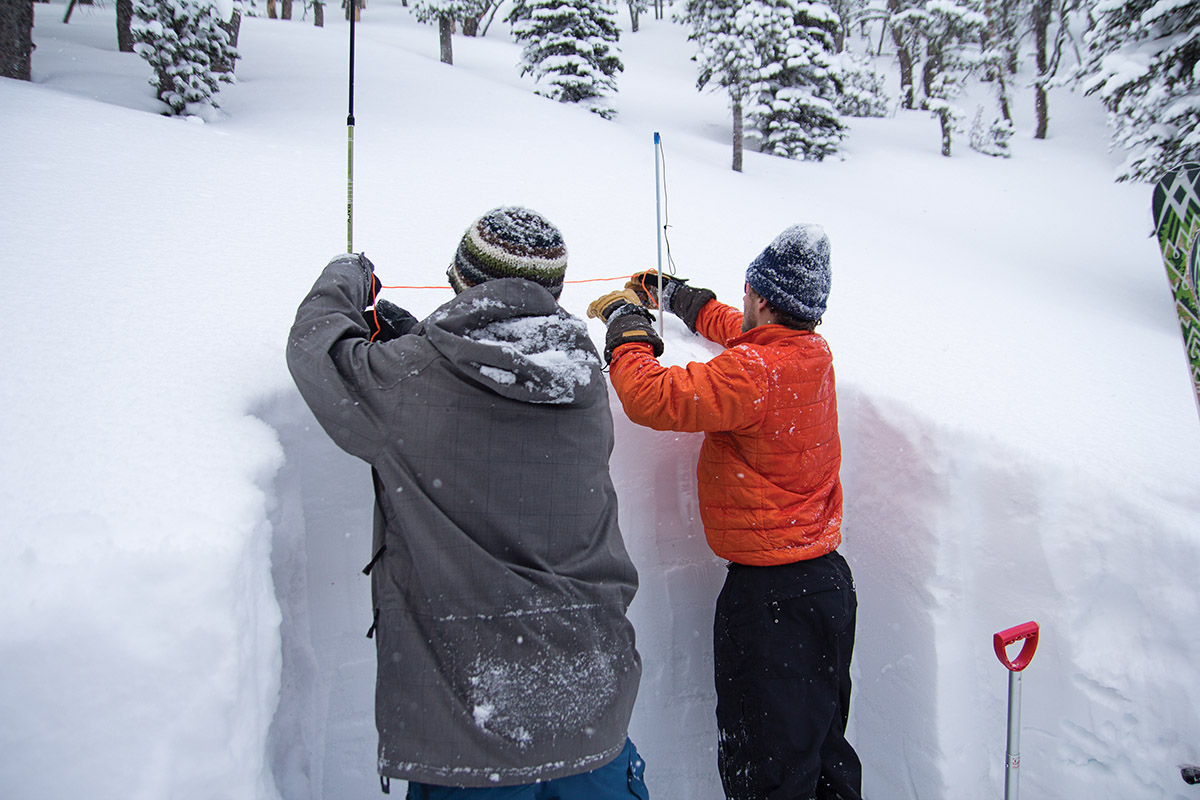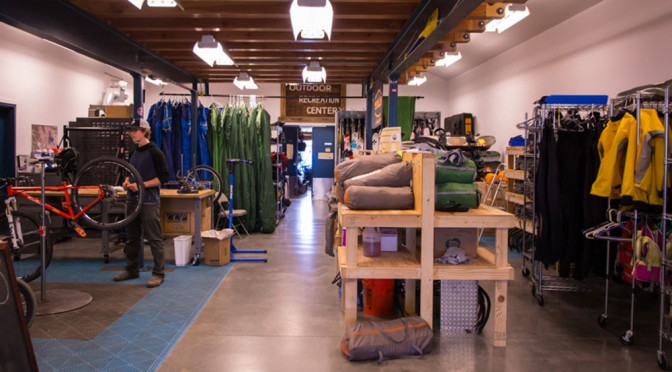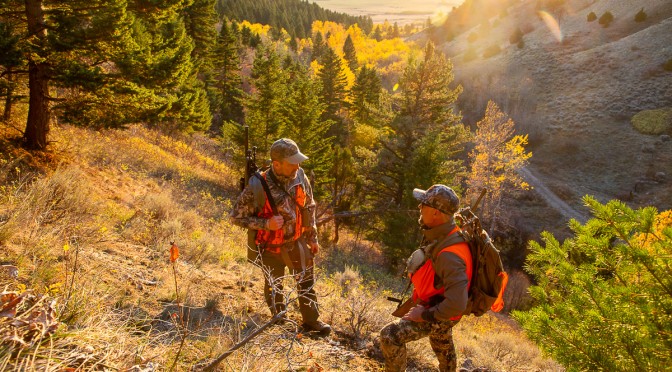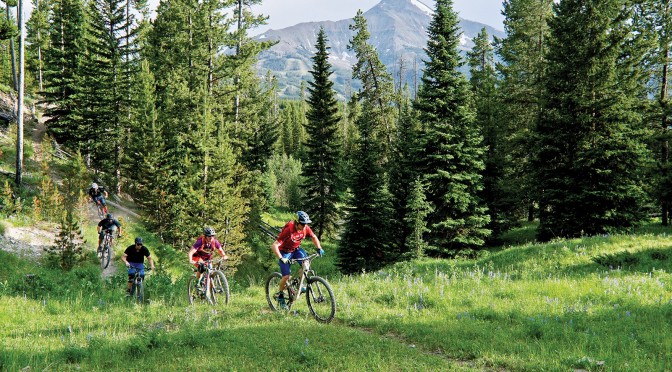by Jack Taylor
Bozeman has some of the best ice climbing in the Lower 48, from easy top-rope crags in Hyalite to grueling alpine routes in the Beartooths. Many folks arrive in this town having never even considered ascending a frozen waterfall using sharp metal spikes, only to find themselves fully hooked on the sport just a few years later. Once considered the realm of extreme alpinists, ice climbing is now an avocation for the masses. Clinics are offered all winter by various guide services, so you can safely learn the ropes. And in case you haven’t already heard about it, the annual Bozeman Ice Festival is not to be missed.
Where to Go
Beginner
Though Hyalite has a good selection of easy climbs, as a starting place, one crag is more popular than all the rest: G1 (formally “Genesis 1”). It’s the closest cliff to the Grotto Falls parking area—just a 15-minute walk up the hill—and you can easily set up a top-rope by scrambling around to the right. Once you’ve mastered the movement here, check out nearby Lower Greensleeves, Fat Chance, and Mummy I.
Intermediate
A logical progression, the next step up is G2, about twice as far up the hill as G1. It’s longer, more difficult, and more exposed, but you can still hike around (left, this time) to set up a top-rope if you’re not up to leading yet. Other excellent intermediate climbs in Hyalite include Hangover, The Fat One, Mummy II, and Twin Falls.
Advanced
Hyalite has hundreds of ice and mixed climbs, and if you’re looking for a comprehensive guide, check out Joe Josephson’s guidebook The House of Hyalite. To get you started, though, here are some top picks: Responsible Family Men climbs a striking pillar hanging high on the canyon wall. Cleopatra’s Needle, when formed, is a breathtaking line near Twin Falls that’s sure to draw a crowd. Zack Attack, considered by many as the best winter route in Hyalite, tackles four pitches of rock and ice, guarded by a burly approach.
Outside of Hyalite, notable climbs include Hydromonster near Cooke City, California Ice up East Rosebud Creek, and the Lowe Route on the Sphinx—a popular early-season route that becomes a dangerous avalanche path once snow piles up.
Essential Gear
If you already rock climb, you’re off to a good start. Rope, harness, and helmet are the main essentials, in addition to a good pair of climbing boots. Shop around for a used pair if you’re just starting out—new ones are pretty spendy. Eye protection is crucial—clear or light-tinted glasses are nice for cloudy days. Of course, you’ll need crampons and ice tools, but if you’re just going out to top-rope, you can usually share these with your partner. Once you start leading and taking on multipitch climbs, you’ll need your own sets of spikes, plus a set of ice screws—six or seven should suffice Don’t forget about ice clippers: these plastic carabiners are specifically designed for racking ice screws and keep things a whole lot more organized on your harness.
On top of all that hardware, dressing the part is important. Start at skin-level: thick wool socks to prevent cold feet and bruised toes, and synthetic or wool long underwear on the top and bottom. Next, don a fleece sweater that you’ll be comfortable in all day, and perhaps fleece pants if it’s cold out. At this point, start piling on upper layers (too many lower layers will restrict movement in your legs). A synthetic insulated jacket will keep you toasty. Throw on a waterproof shell and rain pants to keep dripping water on the outside—even if it’s below freezing, ice climbs can still be wet. Carry two or three pairs of gloves, at least one of them waterproof, and a hat or balaclava that fits under your helmet. For really cold days, bring a big down parka, but be sure to only wear it when you’re belaying. If you wear it on a climb, it’s sure to get wet from sweat or dribbles, which will render those down feathers cold, heavy, and possibly damaged.
Make sure to bring enough food and water—your body burns a lot of calories when it’s cold. Some nice extra touches include a thermos of hot soup, tea, or cocoa; a package of handwarmers; and perhaps a nip of whiskey if you’re feeling frisky. Jokes aside, take safety seriously: carrying a satellite-communication device is always a good idea, and if you’re going into avalanche terrain, carry a beacon, shovel, and probe.

